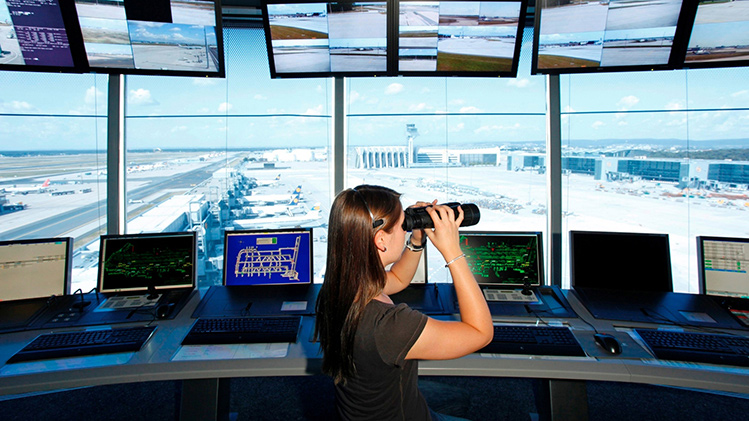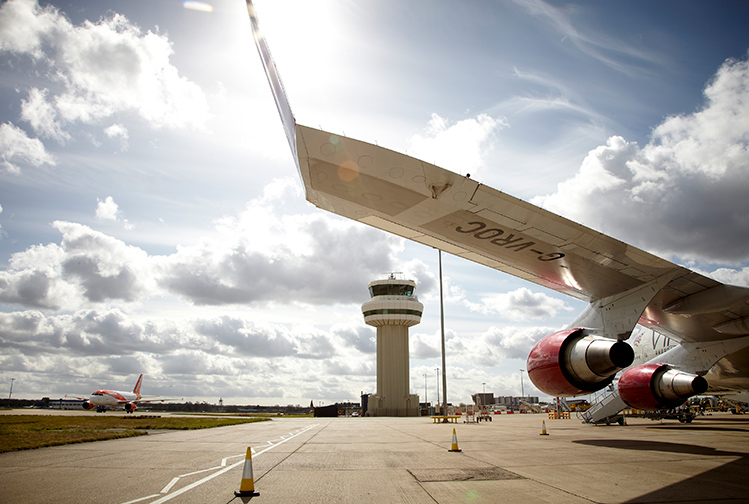The European Commission (EC) wants to take ATM modernisation forward with a new package of mandatory investment in ATM that also targets airports. The current EC thinking is that this new mandatory investment needs very stringent investment timelines, reduced public funding and an enforcement system based on penalties. Luc Laveyne and Barbora Smolikova report.
The pace of aviation and Air Traffic Management (ATM) modernisation will not immediately match pre COVID-19 levels. Airport operators and airlines, which have to earn their own revenues, will have huge difficulties in restoring investment capability, both in terms of finances and human resources. After the SARS crisis in 2003, airports needed up to 4 years to recover.
The COVID-19 pandemic has had an unprecedented impact on the global economy, including one of its key industries: aviation. From very few aircraft flying over the skies to nearly entire fleets grounded, the aviation operational stakeholders found themselves incurring high fixed costs and very limited or no revenue at all. Over time it has become clearer that the magnitude of the COVID-19 impact will be devastating for the entire aviation sector with much uncertainty ahead. If only a few months ago the focus was on the necessary investments in ATM modernisation, today it is more about “surviving” and being able to deliver daily operations linked to core businesses.
The question here is no longer about how or when, but more about whether or not airport operators will be able to restore their respective investment capabilities, to comply with the mandatory investment needs (European Commission Regulation, Pilot Common Project implementation which aims at Single European Sky modernisation).

Airport operators in Europe have always stressed the need for ATM modernisation – an ATM system to serve the passenger. Photo: Fraport AG
The recent announcements of cost cutting and reduced fleet size by major airlines will undoubtedly have an additional impact on the investment possibilities of nearly all airports. Today, experts foresee a long U-shaped recovery, perhaps even followed by a longer than expected period of very low activity. Airports are fully dependent on their infrastructures. The fixed costs and the loans associated with very long-term investments remain, even when revenues are non-existent. The business response to this unprecedented situation is similar to that of airlines: put all investments on hold, try to control staff costs as much as possible through temporary unemployment schemes or laying off personnel to keep the business afloat.
In this complex context, ACI EUROPE’s SESAR Related Deployment Airport Grouping (SDAG) stands by airport operators to provide the necessary support to preserve what has been already invested (since 2014 nearly 85% of deployment implementation has been either completed or was in progress before the COVID-19 pandemic) and to make sure that airport operators are compliant with the EU Regulation to keep bringing added value to their passengers.
ATM investments by airport operators, certainly on the mainland, is mainly investment which benefits either airlines or the entire network. Conversely the business case for airport operators is mostly very negative and direct benefits, which are translated in concrete revenue, are difficult to demonstrate. It is mostly about indirect benefits through less disfunction in the ATM system.
Airport operators in Europe have always stressed the need for ATM modernisation – an ATM system to serve the passenger. ATM modernisation should also strongly contribute to the EU Green Deal. The EU Green Deal needs to be the push towards a much more sustainable aviation sector. ACI EUROPE is convinced that the need for connectivity between people and regions will remain a basic need for citizens and the entire society.
SDAG works closely with airport operators to make sure that a realistic post-crisis SESAR deployment recovery plan is developed. In this respect and based on the willingness to contribute to Europe’s ATM modernisation that has to be aligned with the current situation, SDAG has produced a Position Paper on the new Common Project 1 (CP1) requirements, which identify a set of SESAR mature solutions that are mandatory to be deployed in a synchronised way. SDAG’s position is built on the following three main pillars:
- breathing space during the recovery period to find the necessary money and staff to complete the implementation projects
- legal certainty that the timeframes offered in CP1 are realistic, the technology is mature enough, the procurement can be done in a non-monopolistic market and that any potential financial enforcement mechanism is workable and proportionate
- for the sake of further take-up of SESAR procedures and technology, solid financial support can be provided in form of:
- ad hoc aid to inject a relief to the airports that could speed up their restart plans and that want to hire back staff with relevant know-how
- public funding for investments where the investor has no sufficient direct return on investment.
A novelty in the new EC package of mandatory requirements is the proposed enforcement scheme based on penalties. Currently, SDAG cannot agree with the proposed concept of enforcement due to a combination of factors that have to be considered. These include the COVID-19 recovery period, the lack of legal certainty that a non-monopolistic market will be available at the industrialisation target date, the fact that an important part of the investment will have to be done in cooperation with the local ATC and the fact that the enforcement mechanism is built on a nearly pure air navigation service provider (ANSP) concept.
SDAG advocates that the enforcement mechanism, if any, should not create any legal uncertainty and should be limited to those areas where there is no obligation to jointly invest. Member States should designate the most appropriate organisation according to the roles and responsibilities and, concerning airport operators, they could use existing frameworks to ensure timely compliance with the Regulation. Another possibility to mitigate non-compliance at the end date is the use of the legal settlement between the airport operator and the national regulator. Any enforcement mechanism should also contain a link with the monitoring exercise as well as an appeal procedure.
SDAG noted that the EC decoupled the Implementing Regulation from the financial support. However, it is important to underline that airport operators would have never been able to enter the SESAR deployment so massively without the financial support from the Connecting Europe Facility (CEF) Transport Calls. As long as there is mandatory deployment for stakeholders with less concrete outcomes, the logic is that the EC financially provides support with public funding. This is the case for AOP and SWIM investments by airport operators.

Europe’s ATM modernisation is perceived as an essential step to achieve the Single European Sky goals. Photo: Gatwick Airport
Without local investment in AOP, there is no benefit possible for the network. All communications between the Airport Operations Centre (APOC) and the Network Manager Operations Centre (NMOC) or between APOCs should in principle be considered as cross-border investment projects. The same understanding applies to SWIM: there is no benefit possible for the network without local investment in SWIM. This is in line with what the Innovation and Networks Executive Agency (INEA) promotes as priority actions.
In order to make sure that the aviation industry can continue delivering the SESAR technology through automation, digitalisation, enhanced throughput and safety, SDAG believes that two key elements have to be considered while designing and implementing relevant mitigation measures. More specifically, aviation needs financial support with a twofold aim: restarting the SESAR Deployment Programme as soon as possible and bringing back the valuable human resources that are currently either on furlough or even unemployed. The second key element is the need for the European Commission Implementing Regulation (IR) 716/2014 to provide a stable and realistic legal basis. It is crucial that the ongoing PCP revision takes the COVID-19 impact into account and that the deadlines of all PCP ATM areas are postponed by at least 24 months. In addition, the revised PCP Regulation should also envisage the postponement of end date of new functionalities.
Even though there are many uncertainties about the magnitude of the COVID-19 crisis and about the mitigation measures that will be put in place, SDAG will keep cooperating closely both with the stakeholders and the European Commission in order to identify the most appropriate measures that will facilitate the continuity of investments in ATM modernisation.
Europe’s ATM modernisation is perceived as an essential step to achieve the Single European Sky goals: implementing a performance-based regulatory framework, improving technology, increasing safety, optimising airport infrastructure and focusing more on human factors.
For more information, please contact SDAG on the following email addresses: barbora.smolikova@airportgrouping.org and luc.laveyne@aci-europe.org
You can visit the SDAG website: https://www.aci-europe.org/aci-europe-airport-grouping.html
Luc Laveyne is Managing Director, ACI EUROPE’s SESAR Related Deployment Airport Grouping (SDAG).
Barbora Smolikova is Project Manager & Funding Expert, SDAG.







